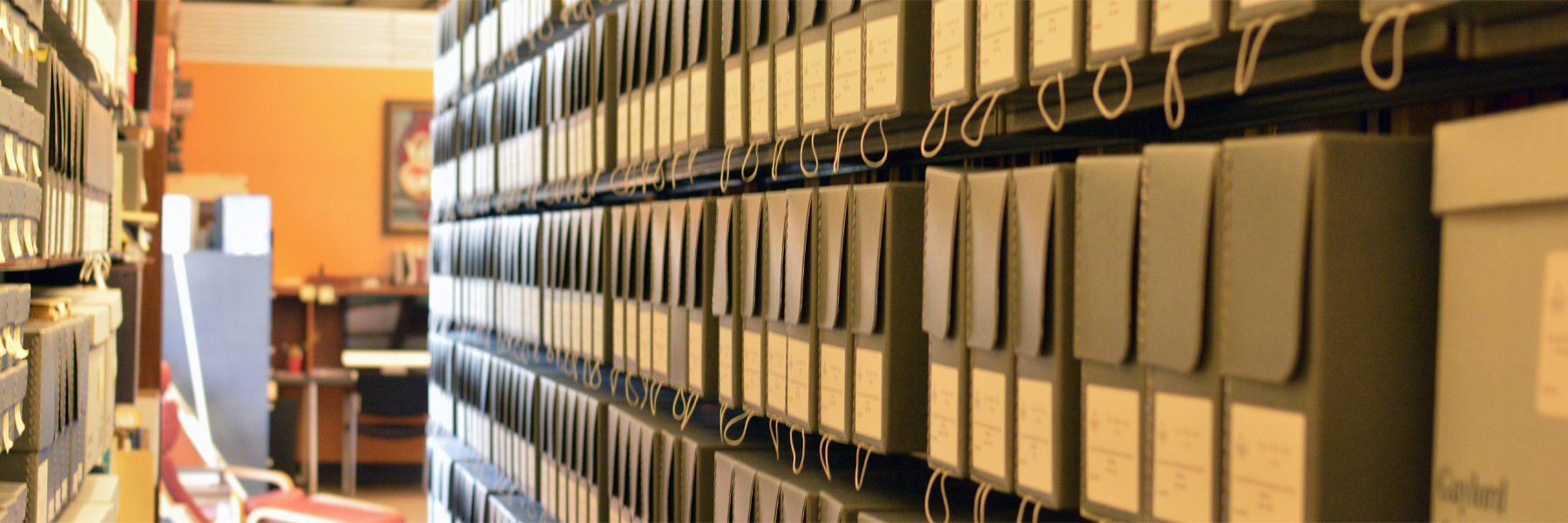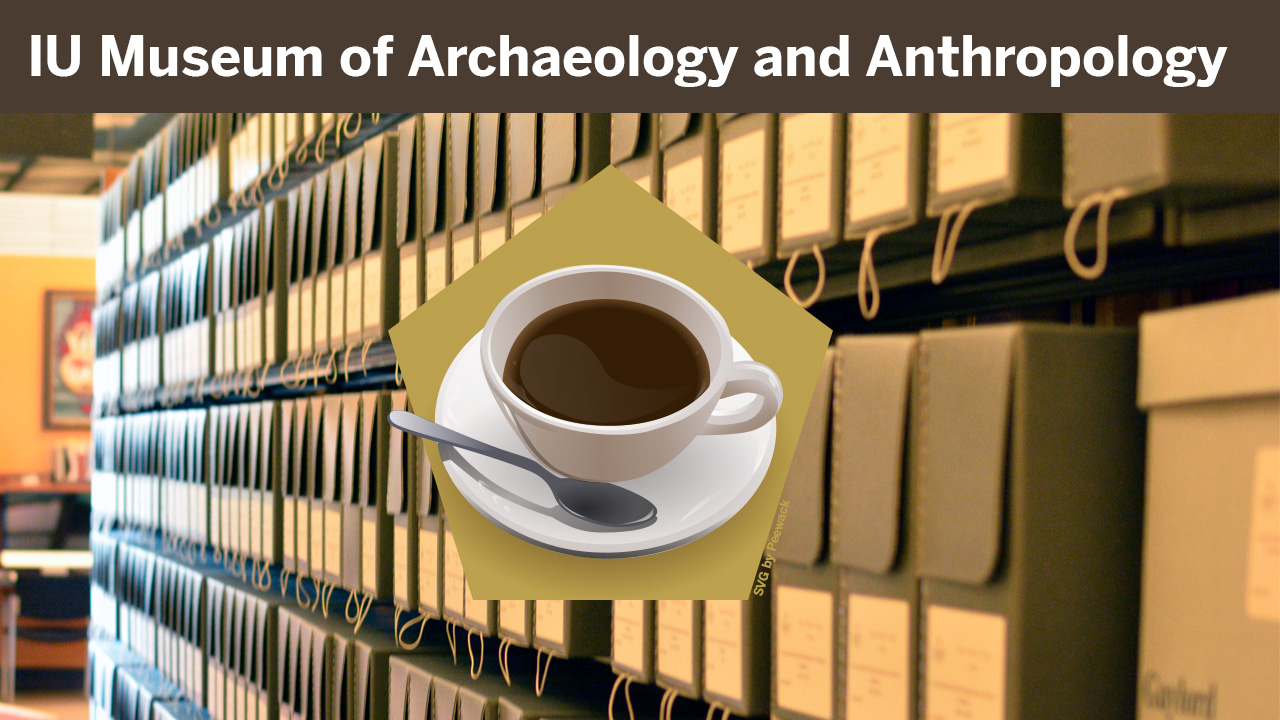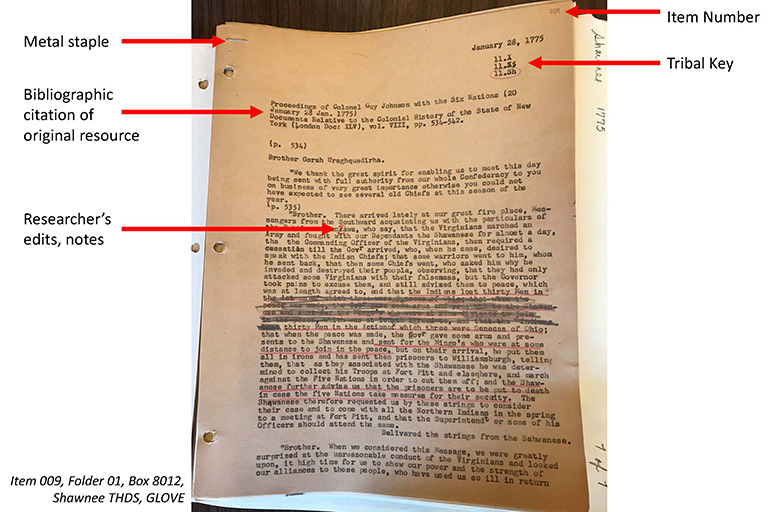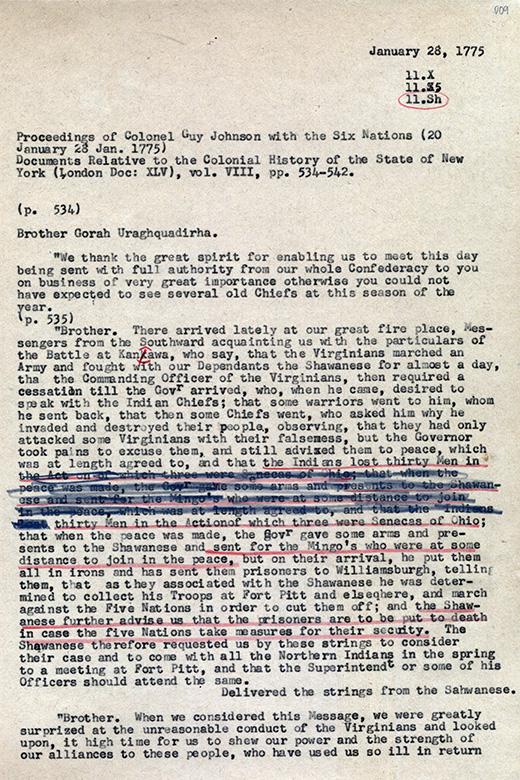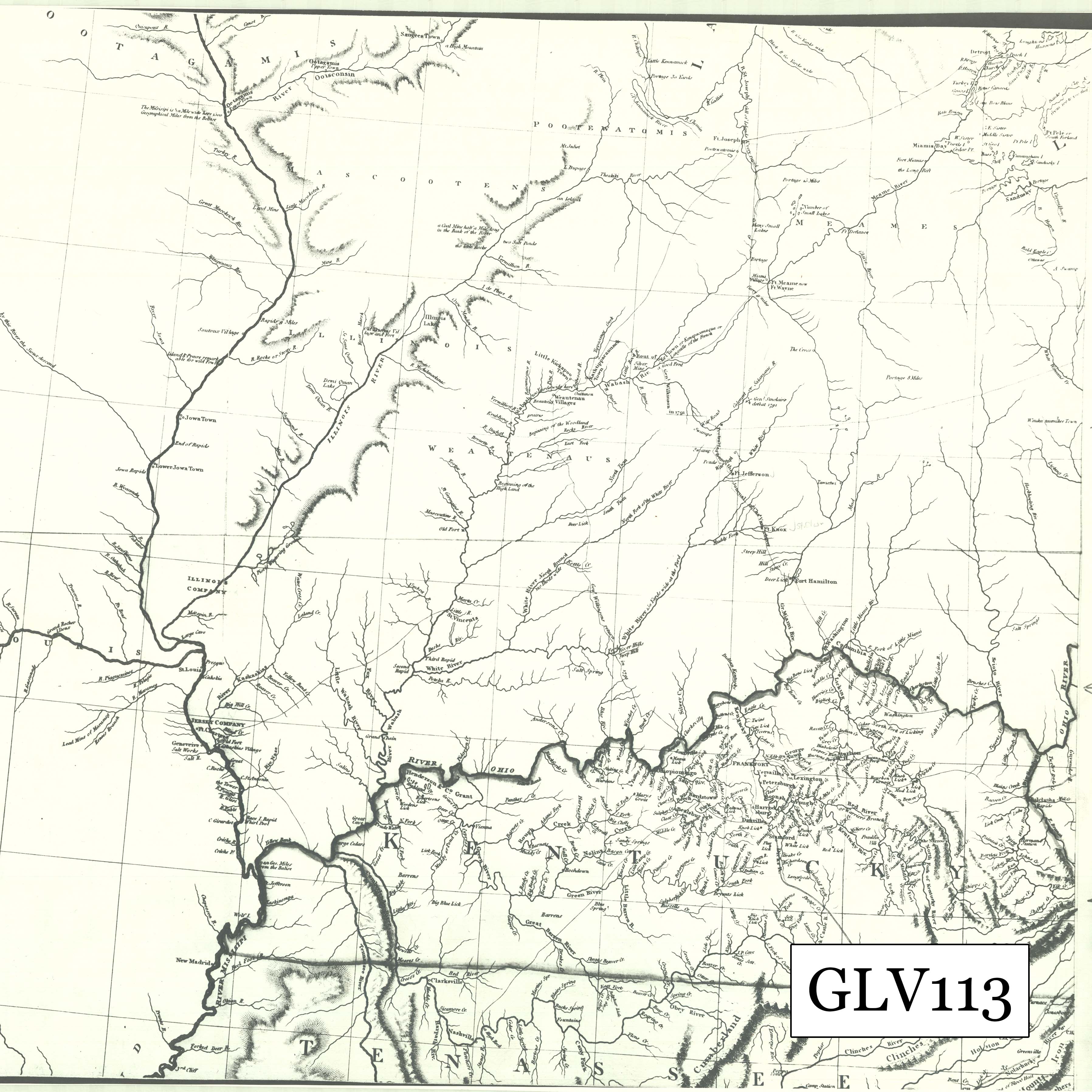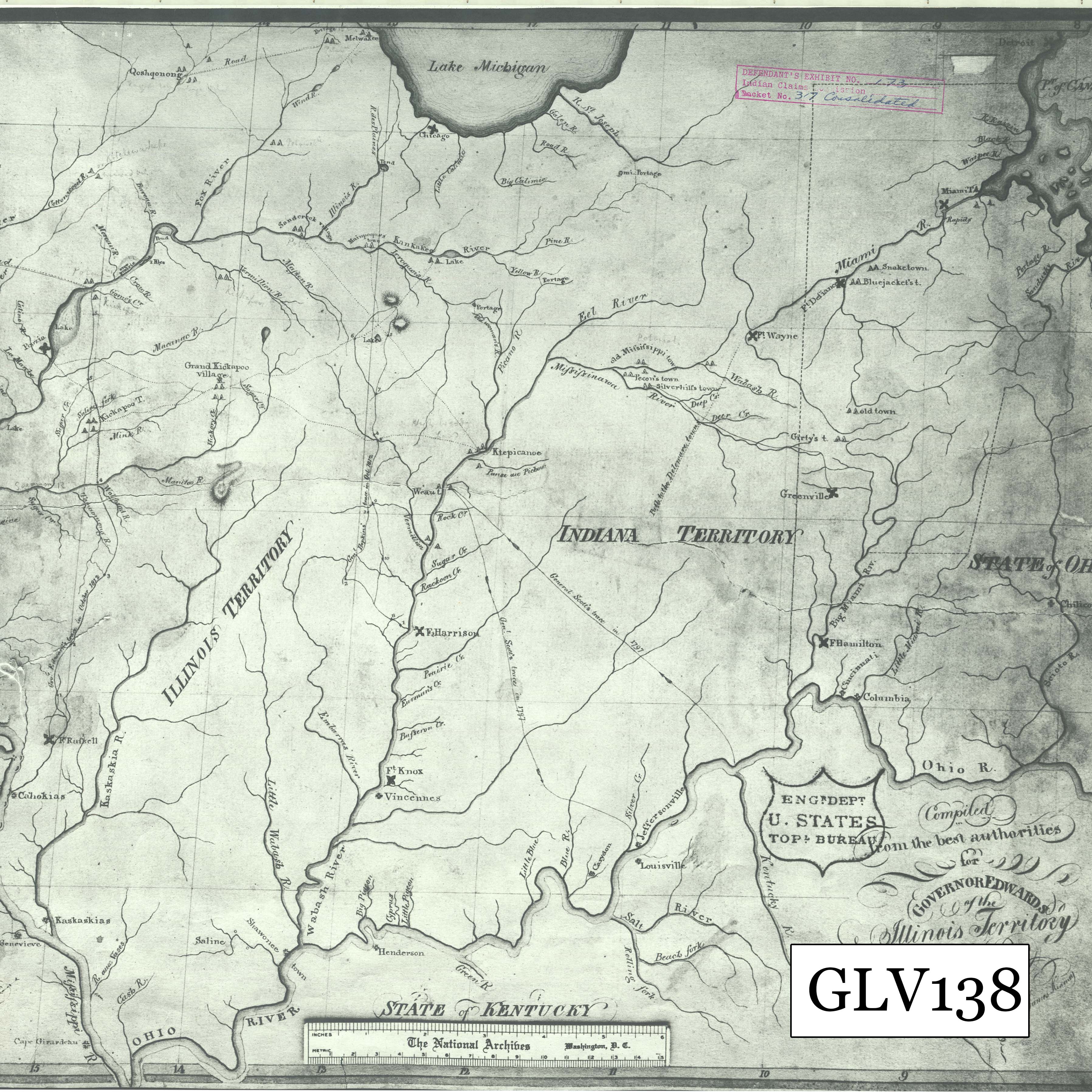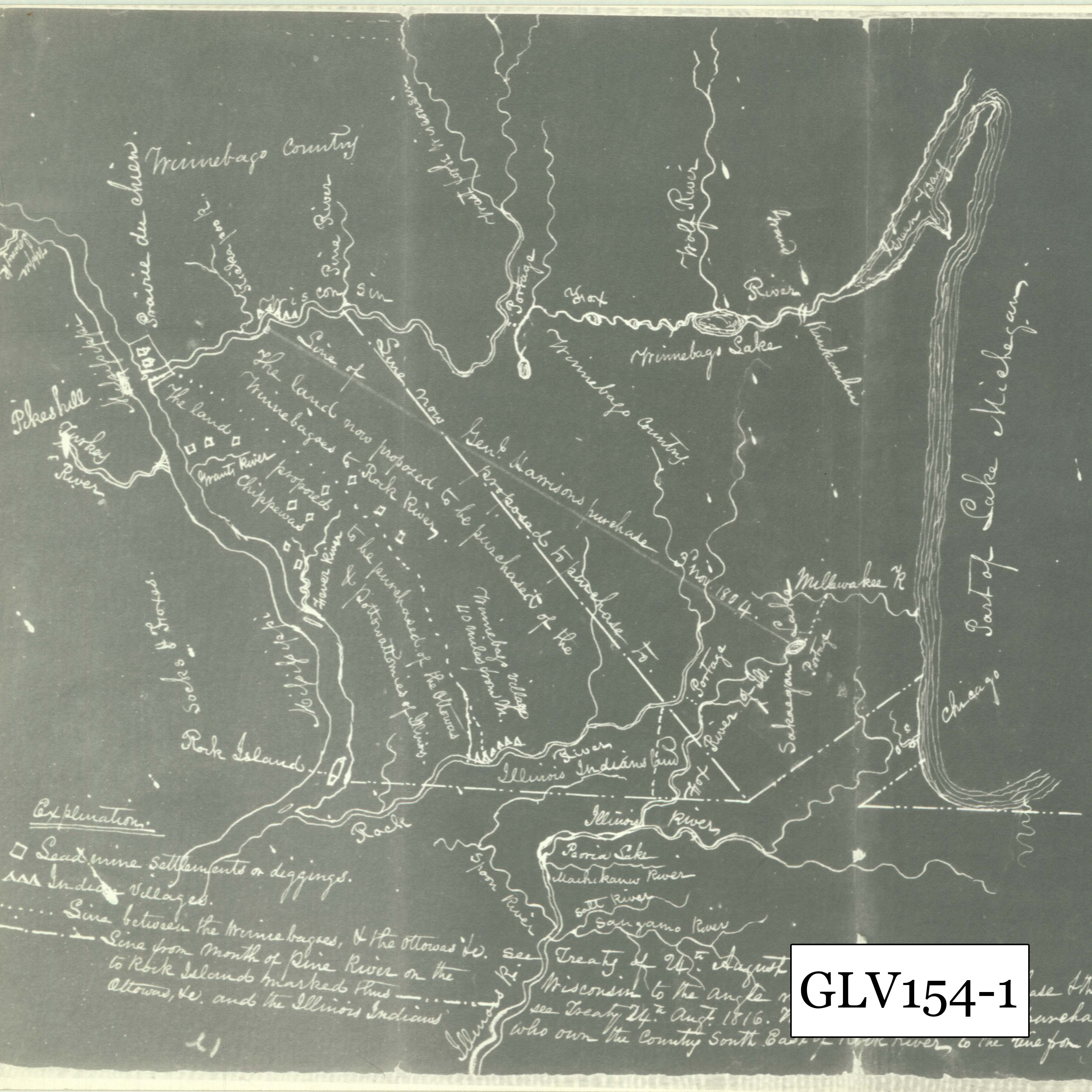The Great Lakes-Ohio Valley Ethnohistory Collection (GLOVE) is a unique assemblage of primary and secondary resources pertaining to the Native American occupancy of the region. These items were assembled in the 1950s by Indiana University professor, Erminie Wheeler-Voegelin and her eight-person research team to support the Great Lakes-Ohio Valley Ethnohistory Project. This U.S. Department of Justice funded research activity was responsible for the preparation of in-depth reports concerning American Indian land use and tenure. These reports were intended to be used in the government's defense against cases involving alleged treaty inequities and which were brought before the Indian Claims Commission, a body and a process authorized by federal legislation signed into law on August 13, 1946.
These materials cover history and land use of tribes and groups in the Ohio Valley and Great Lakes region from the 1600s until the late 1900s, and record the findings of the Indian Claims Commission.


